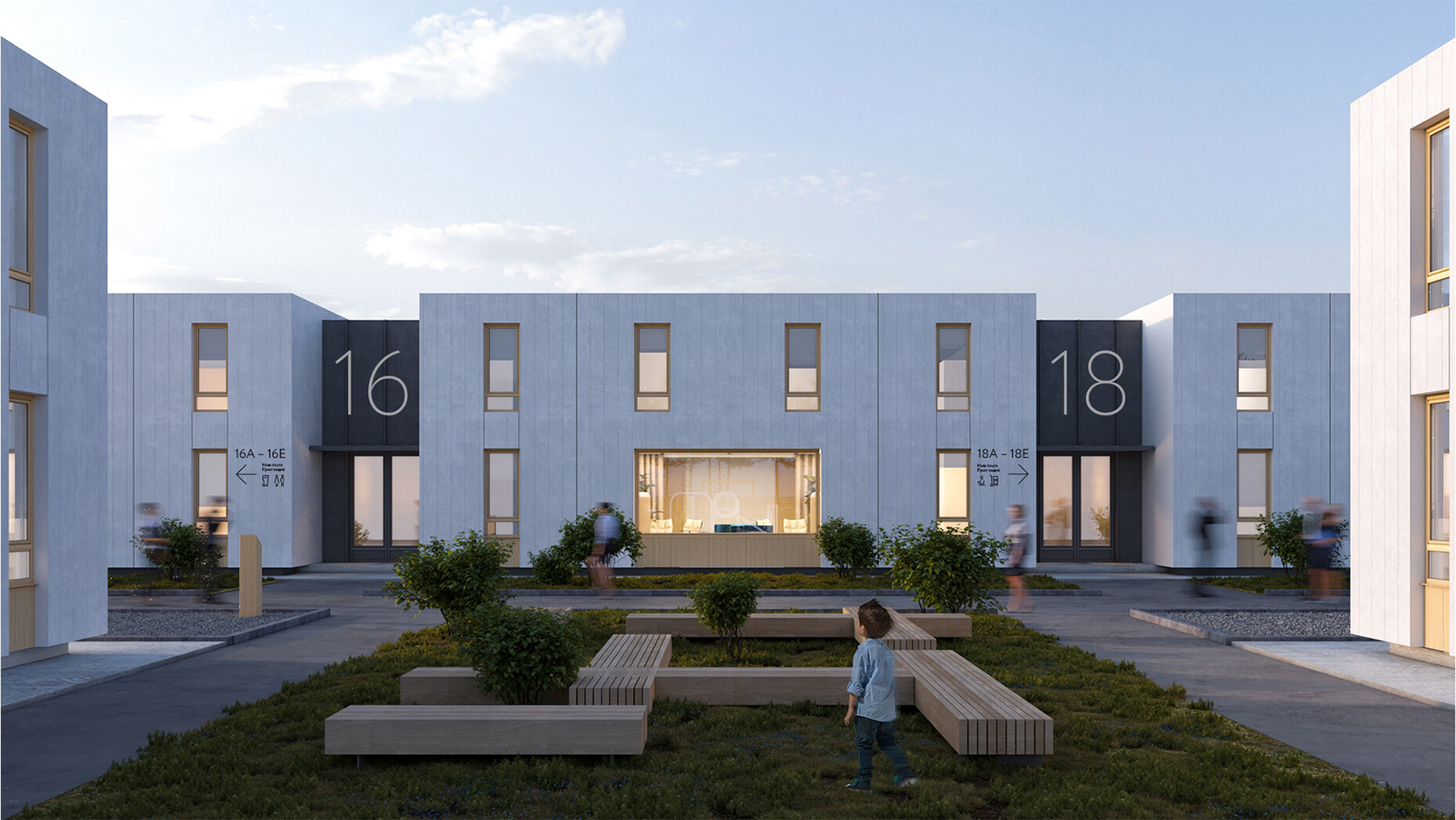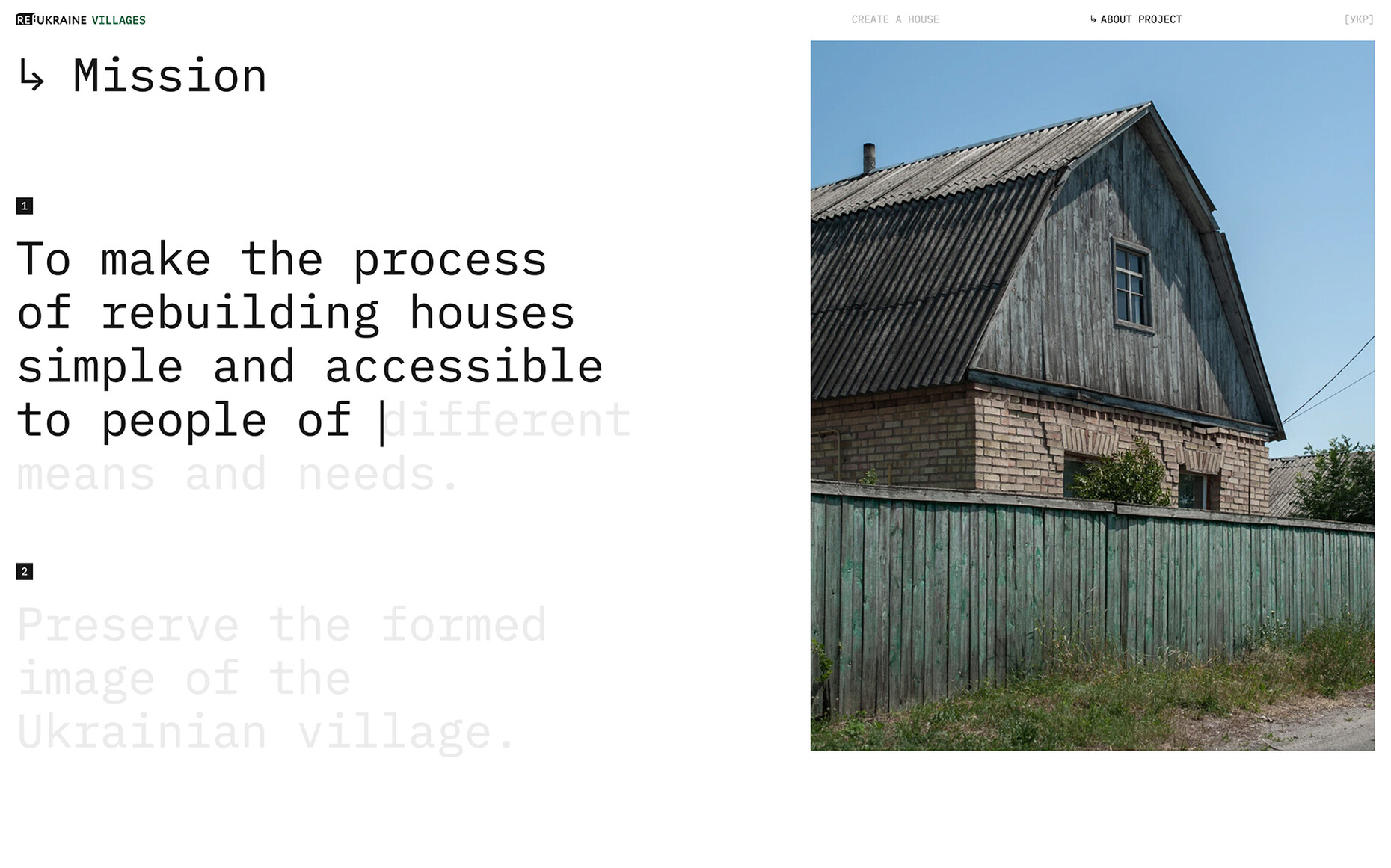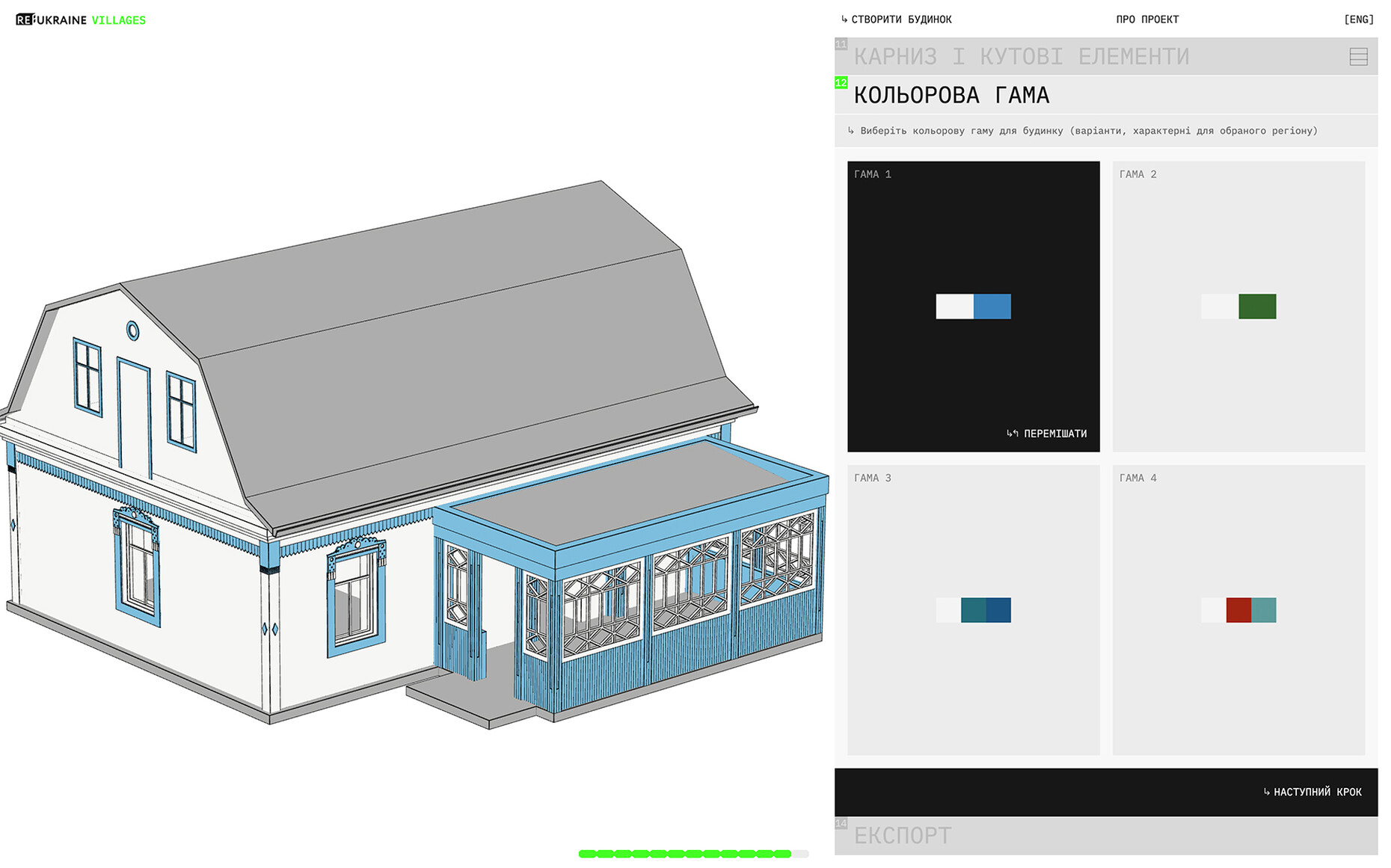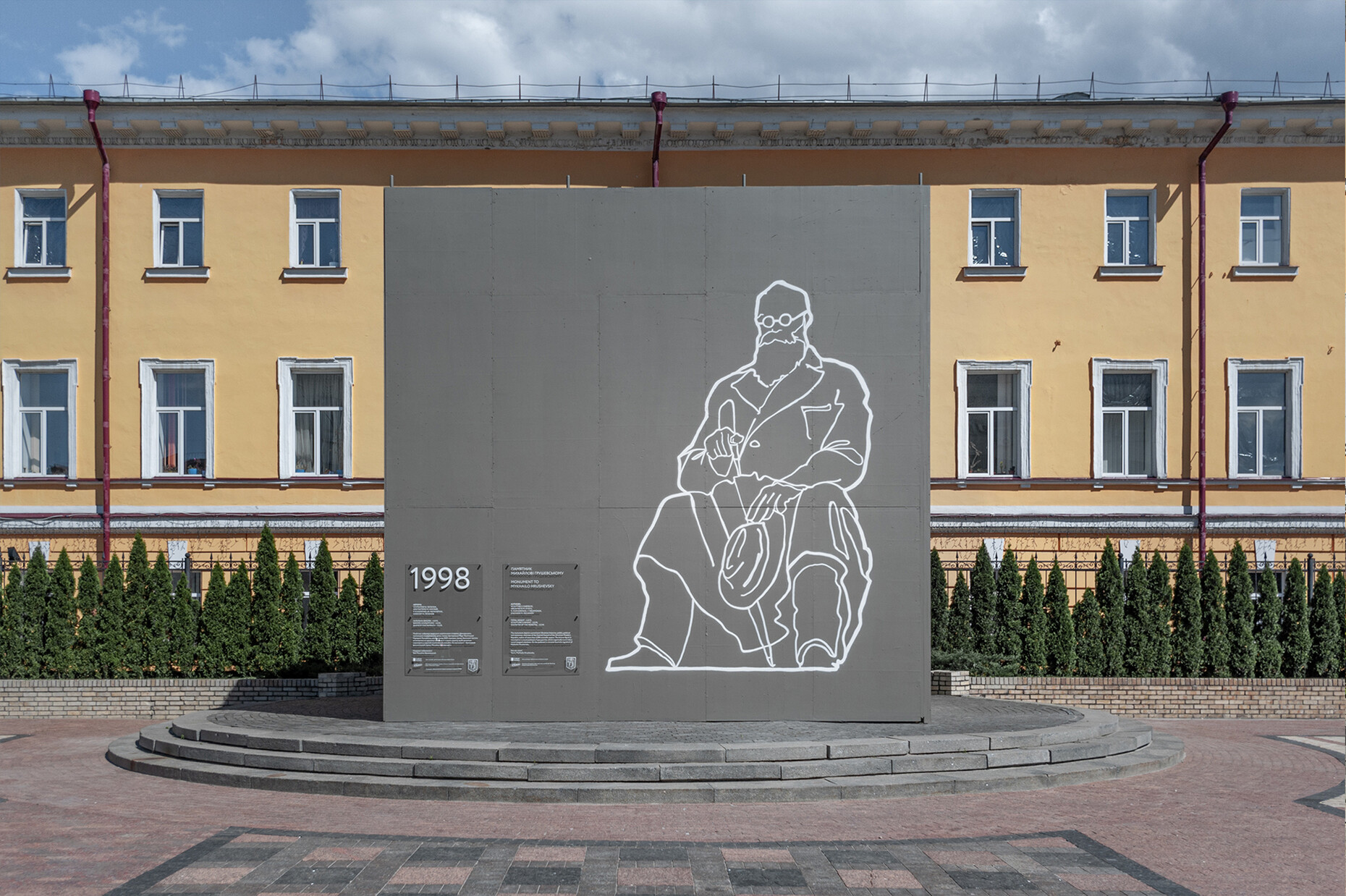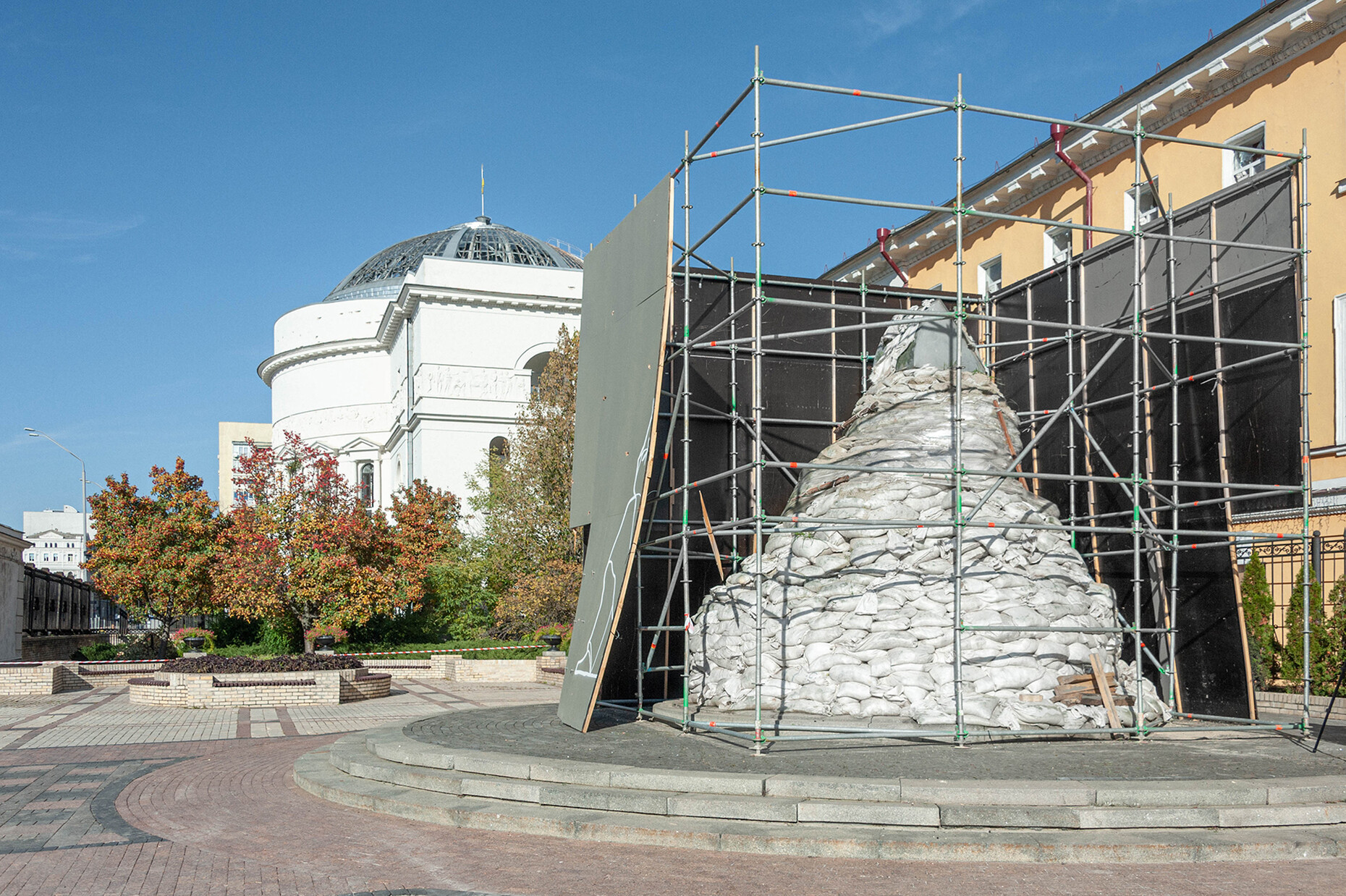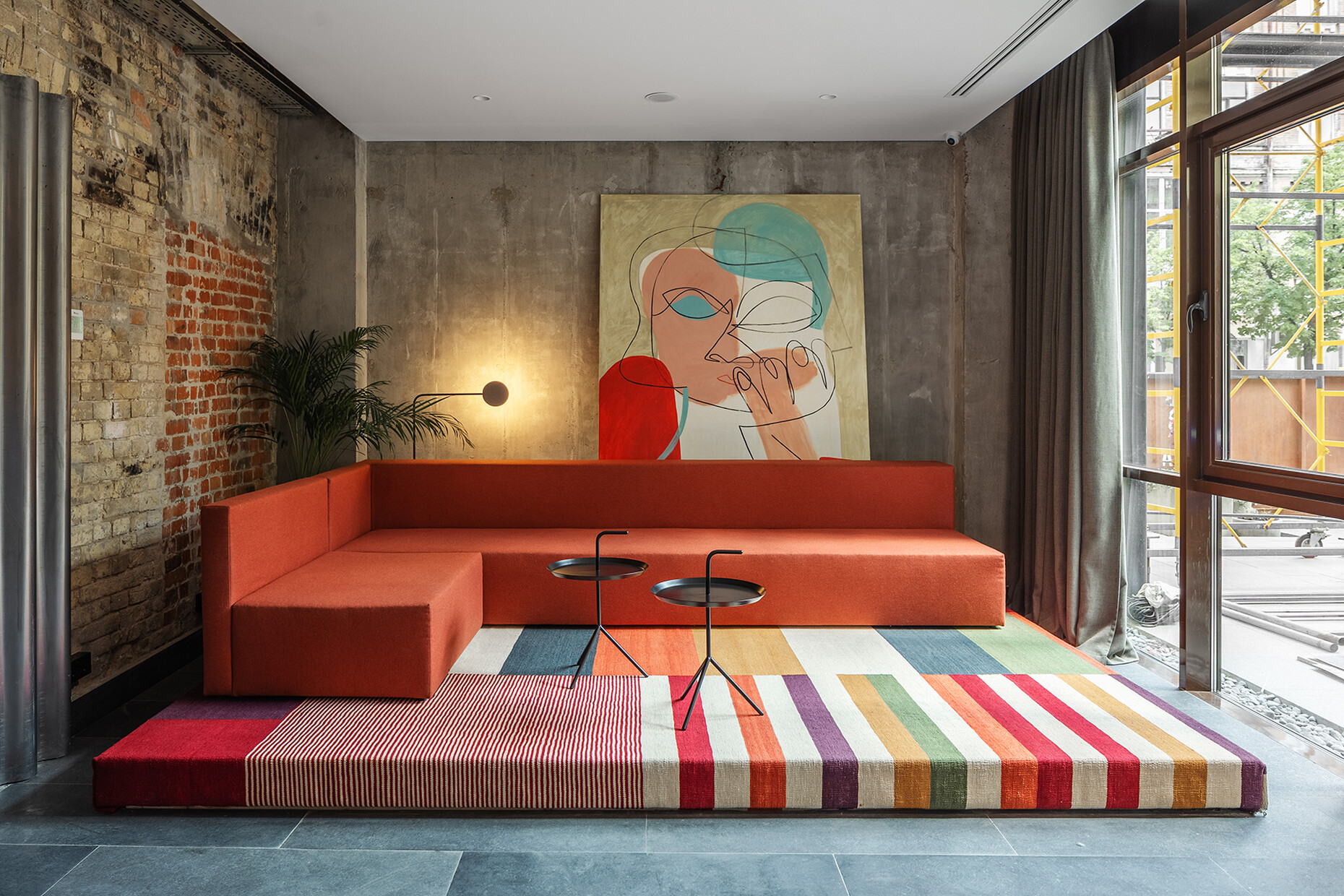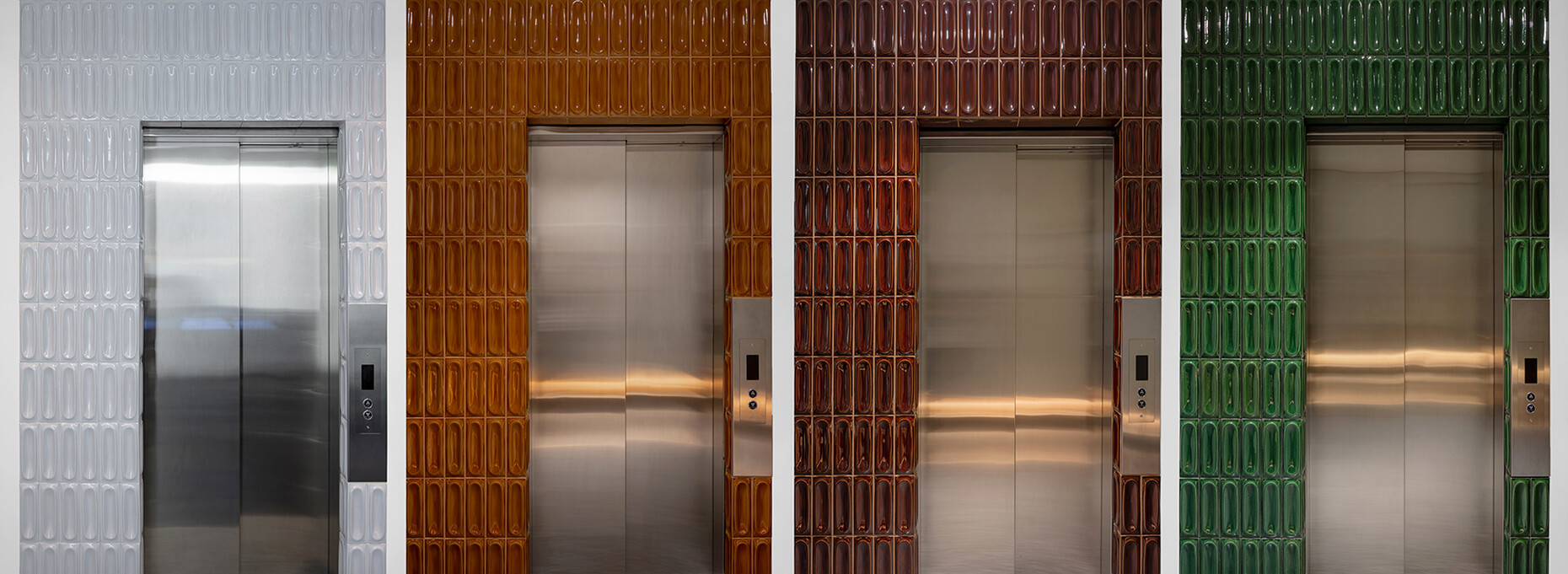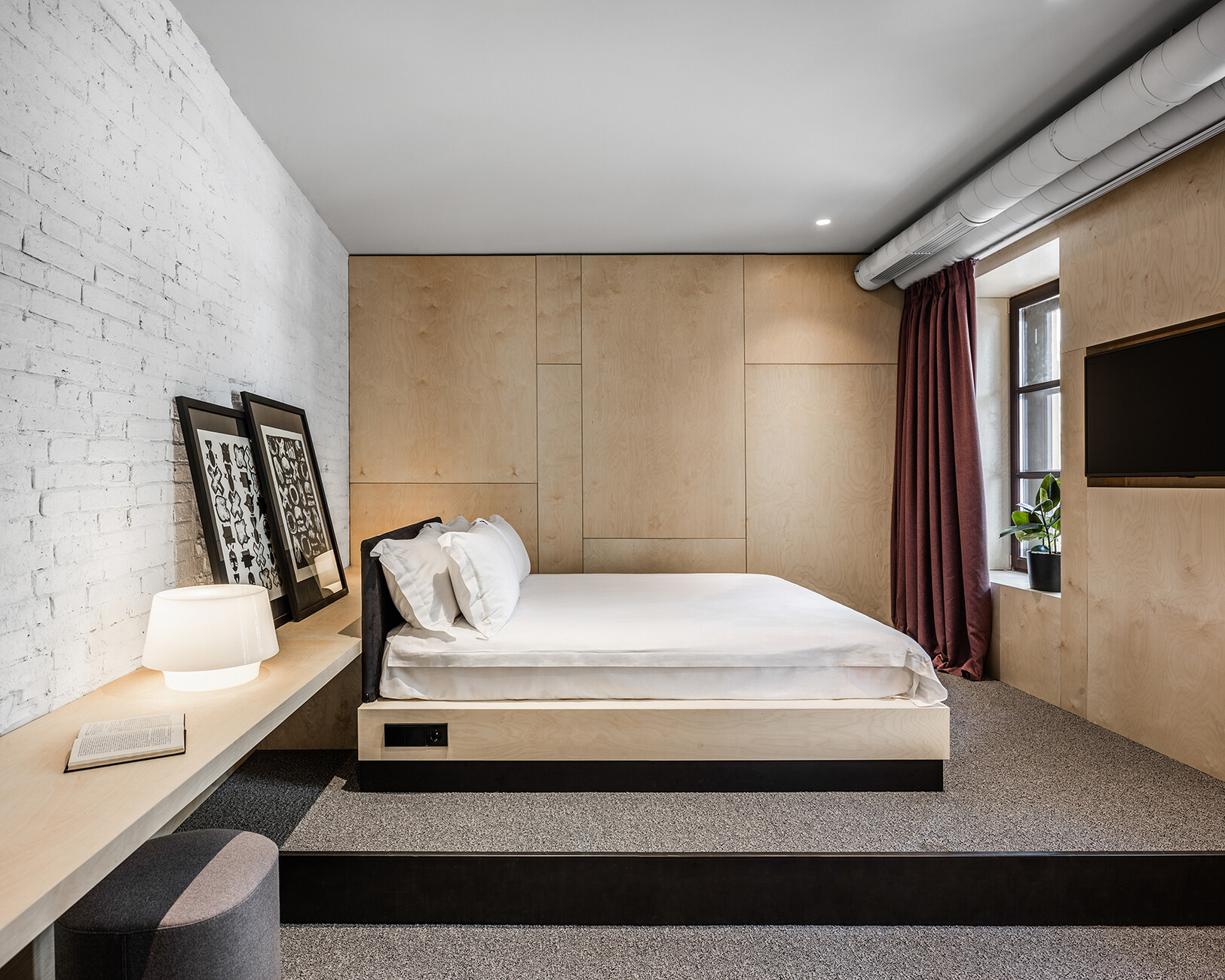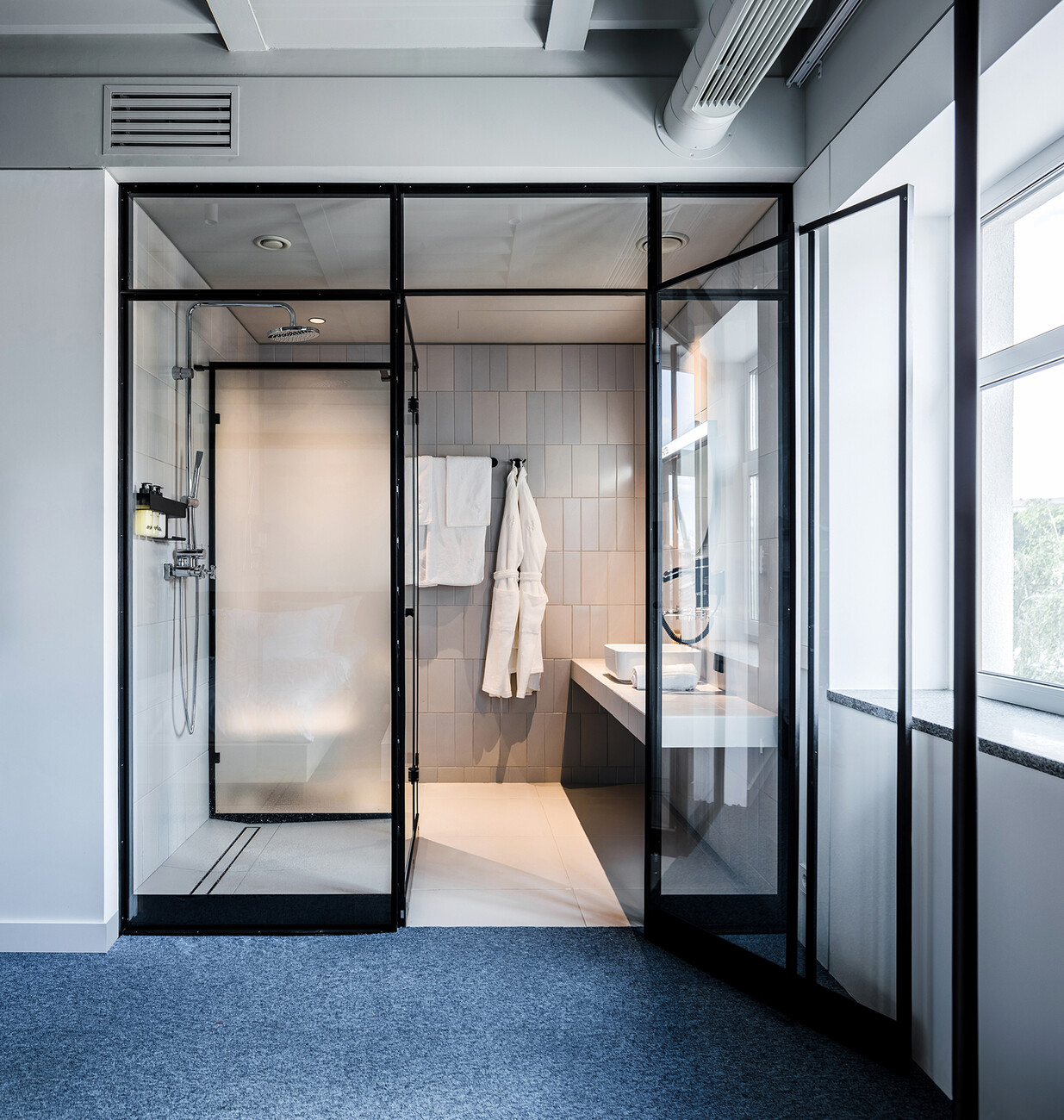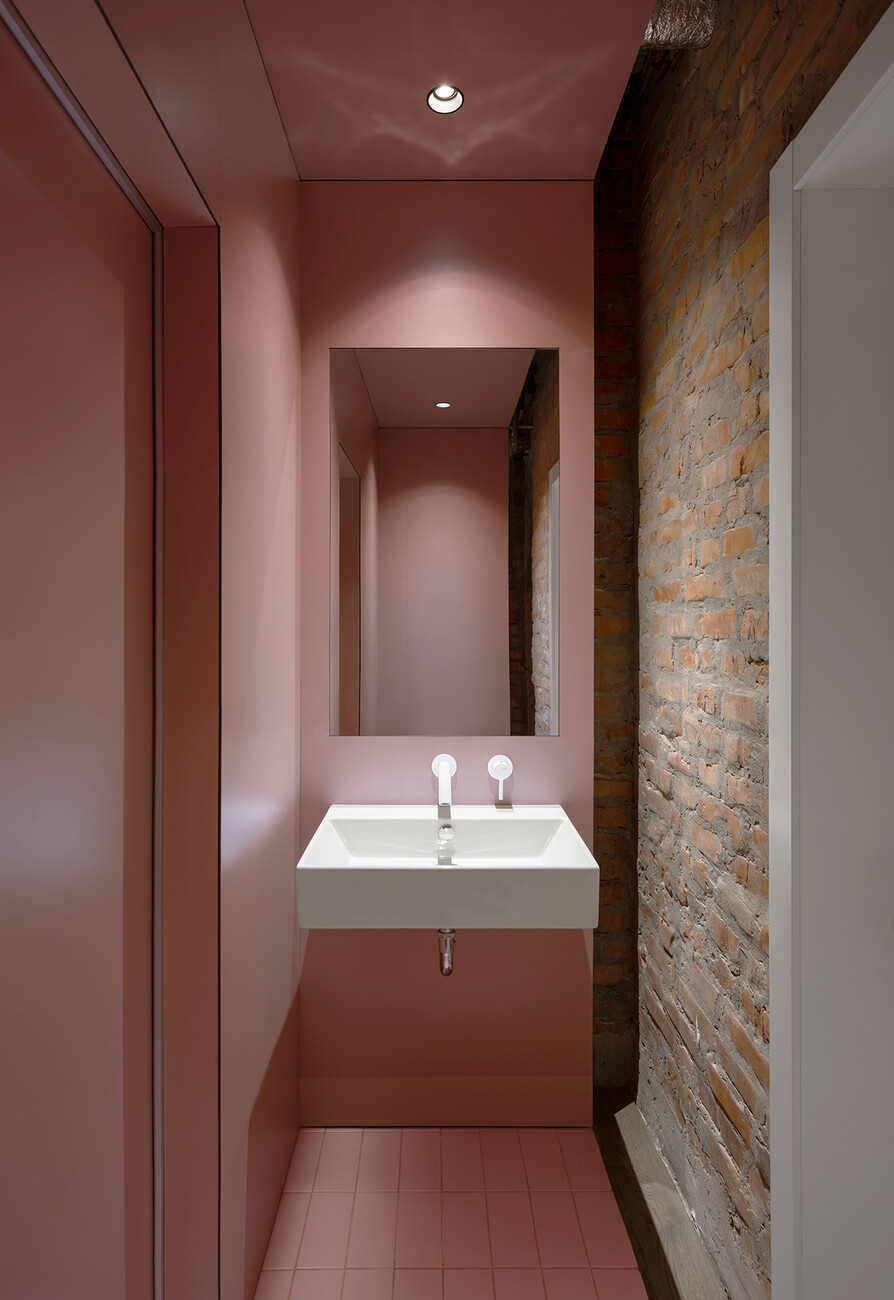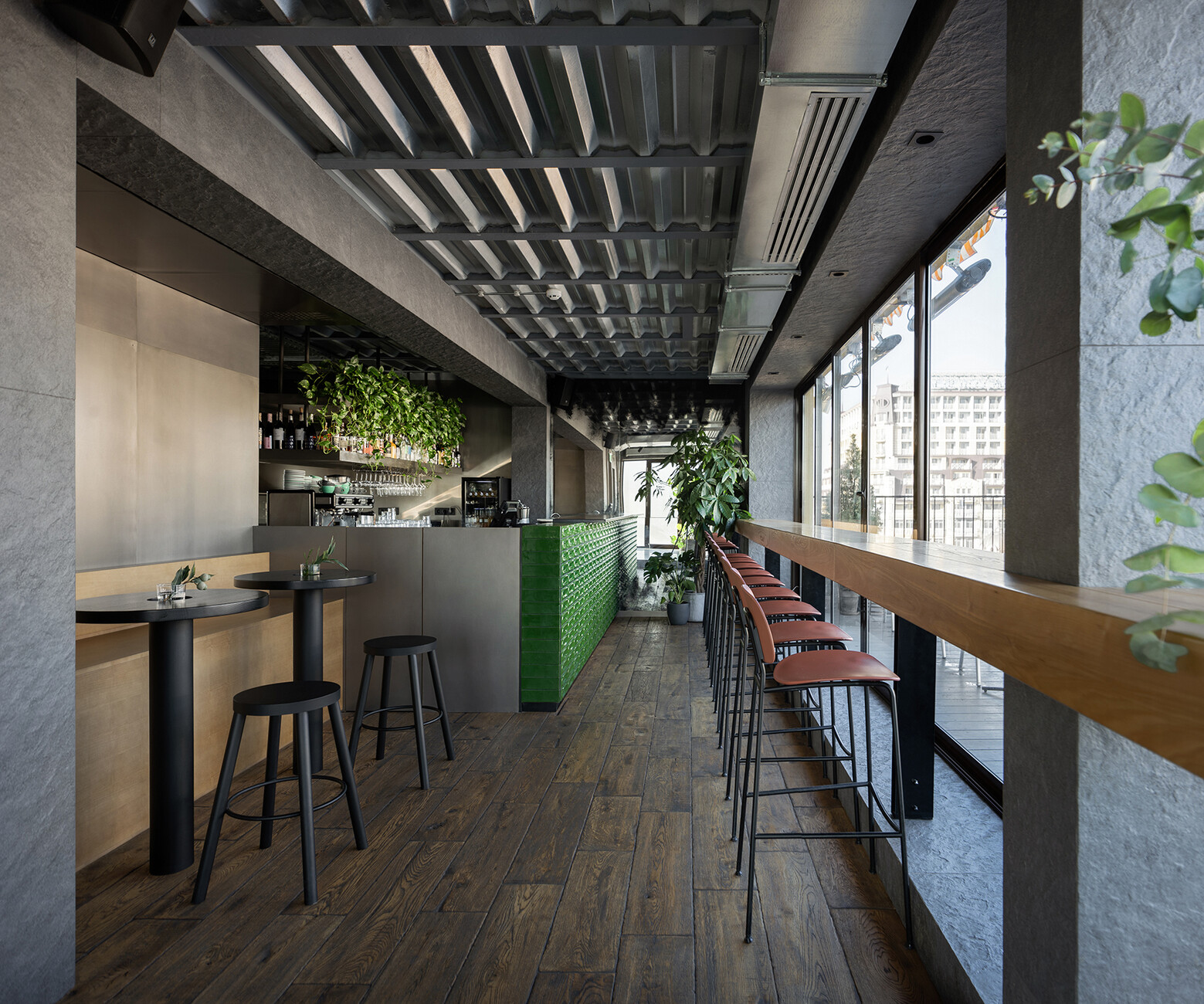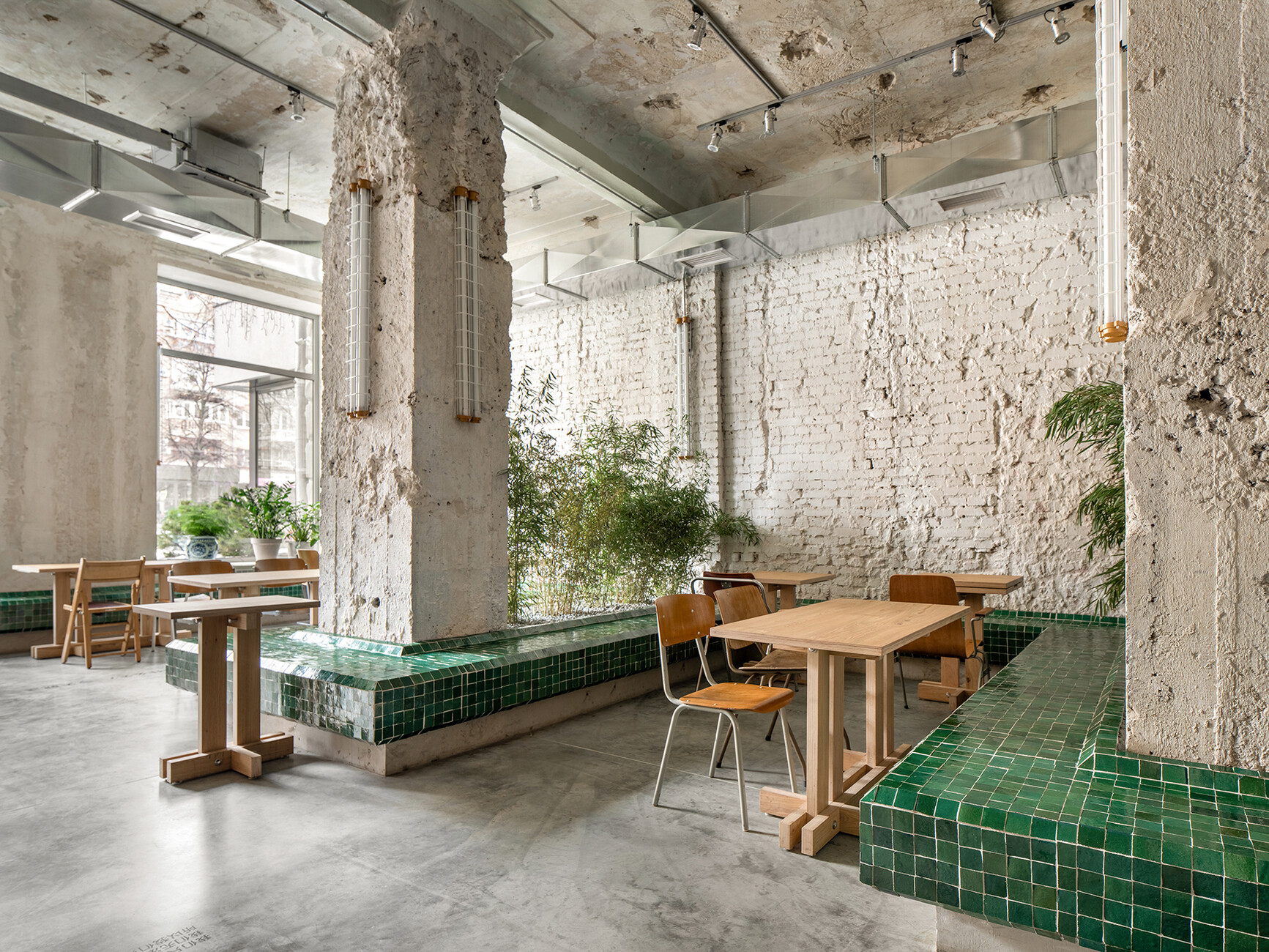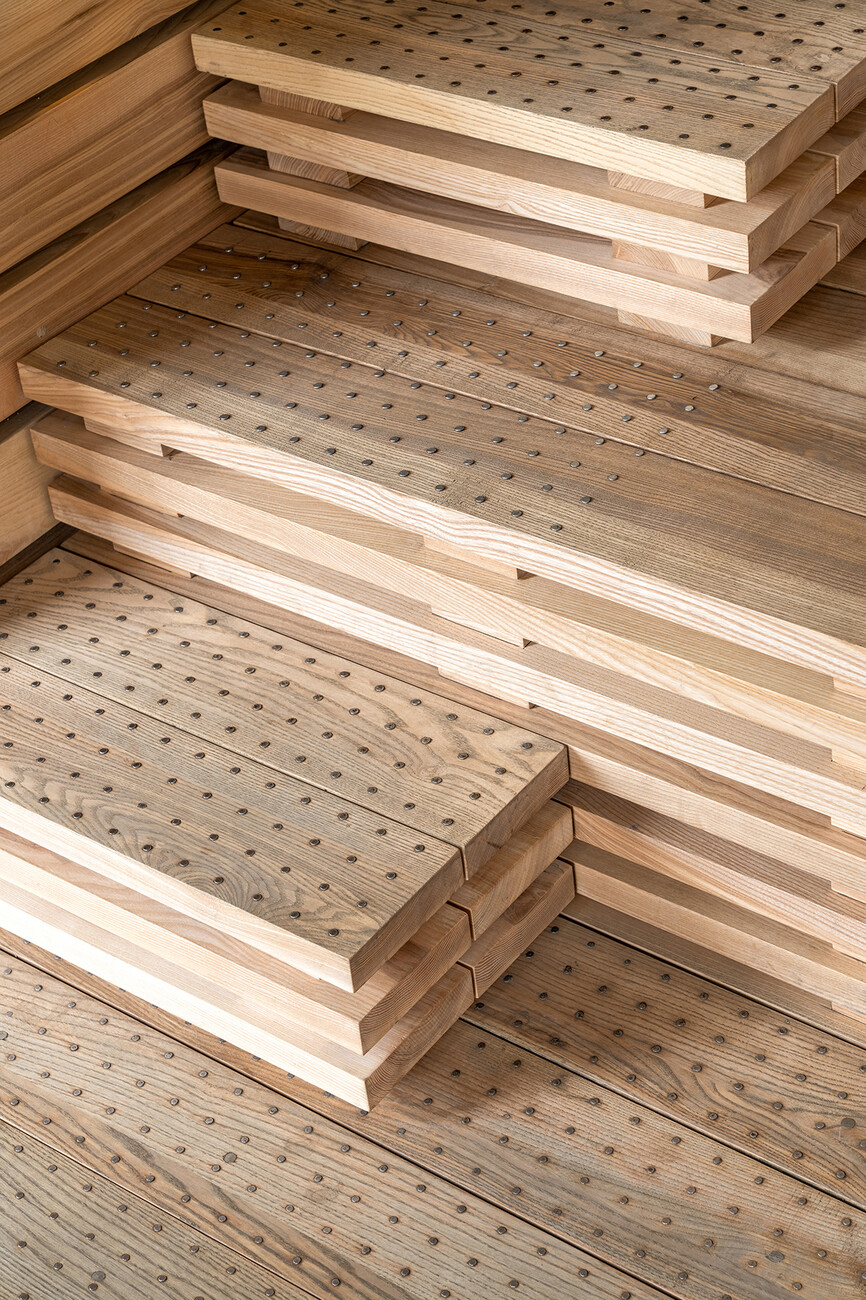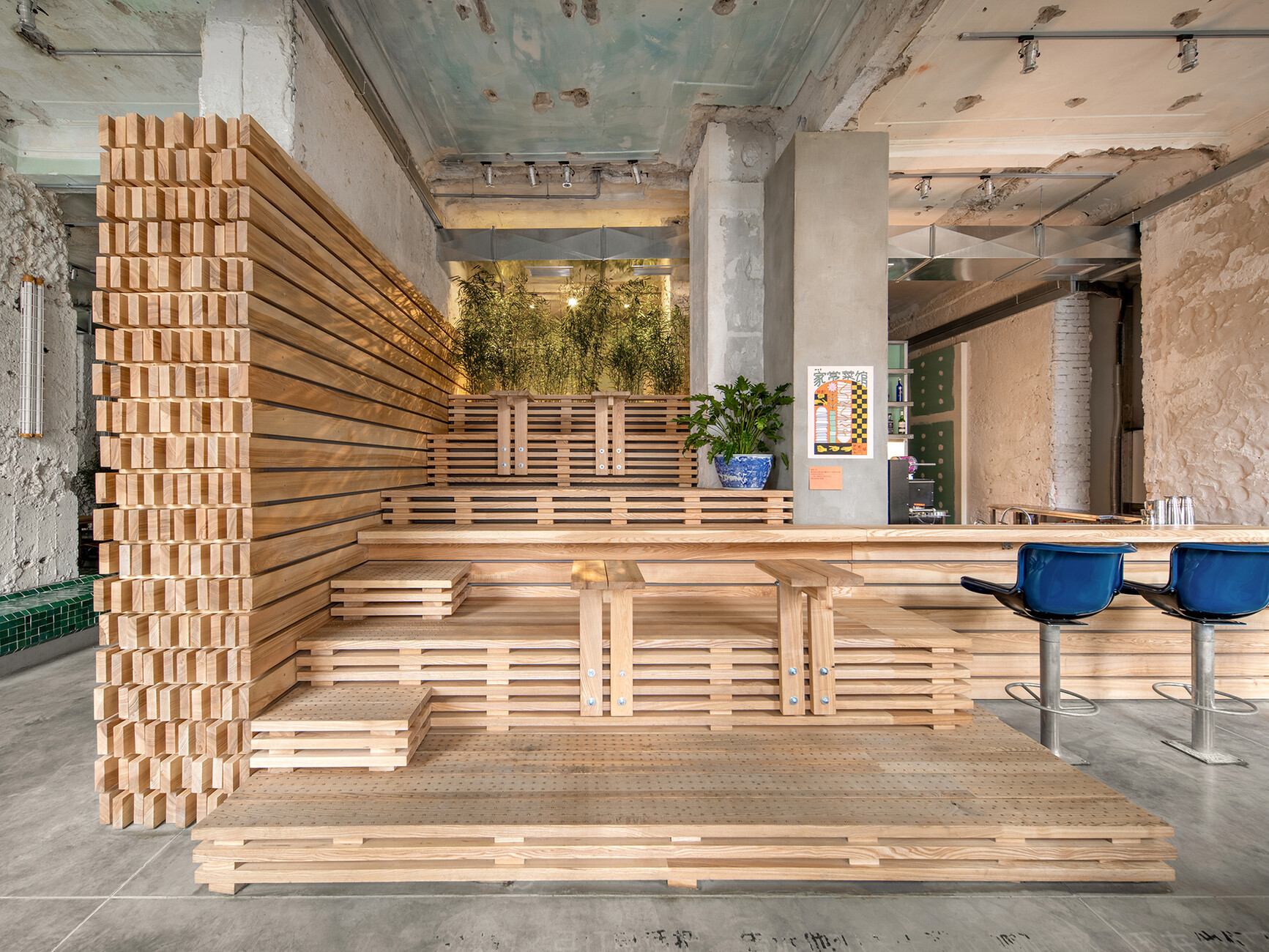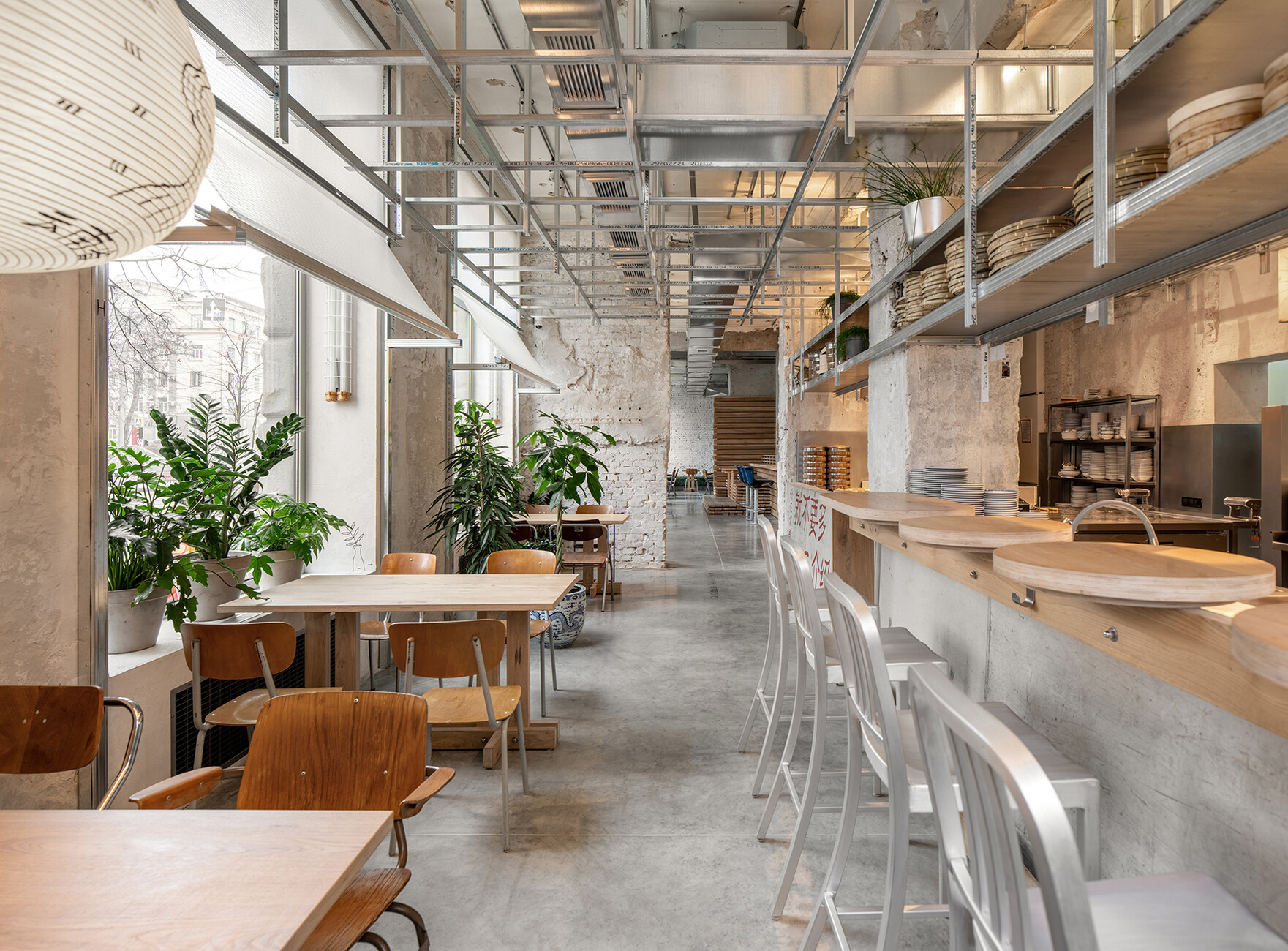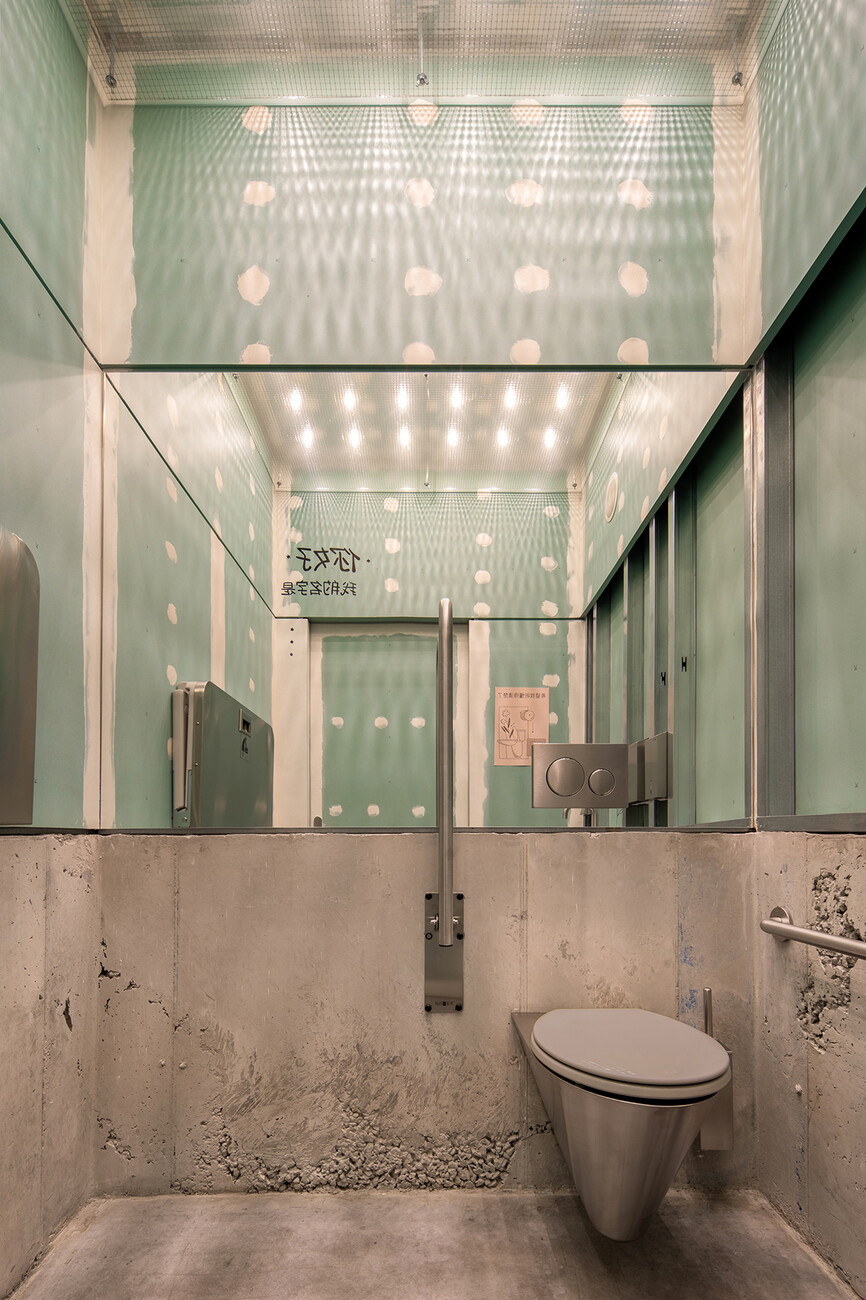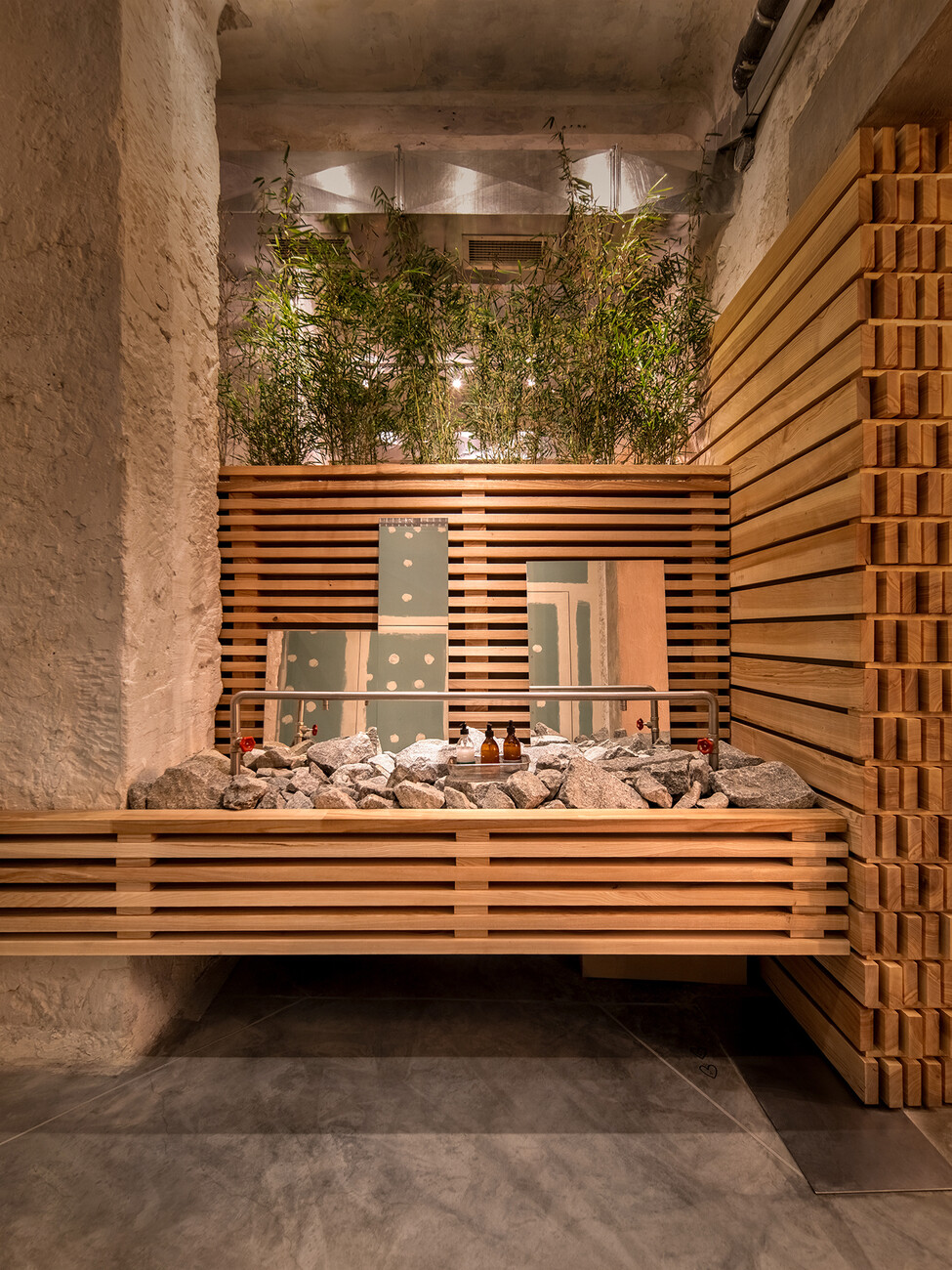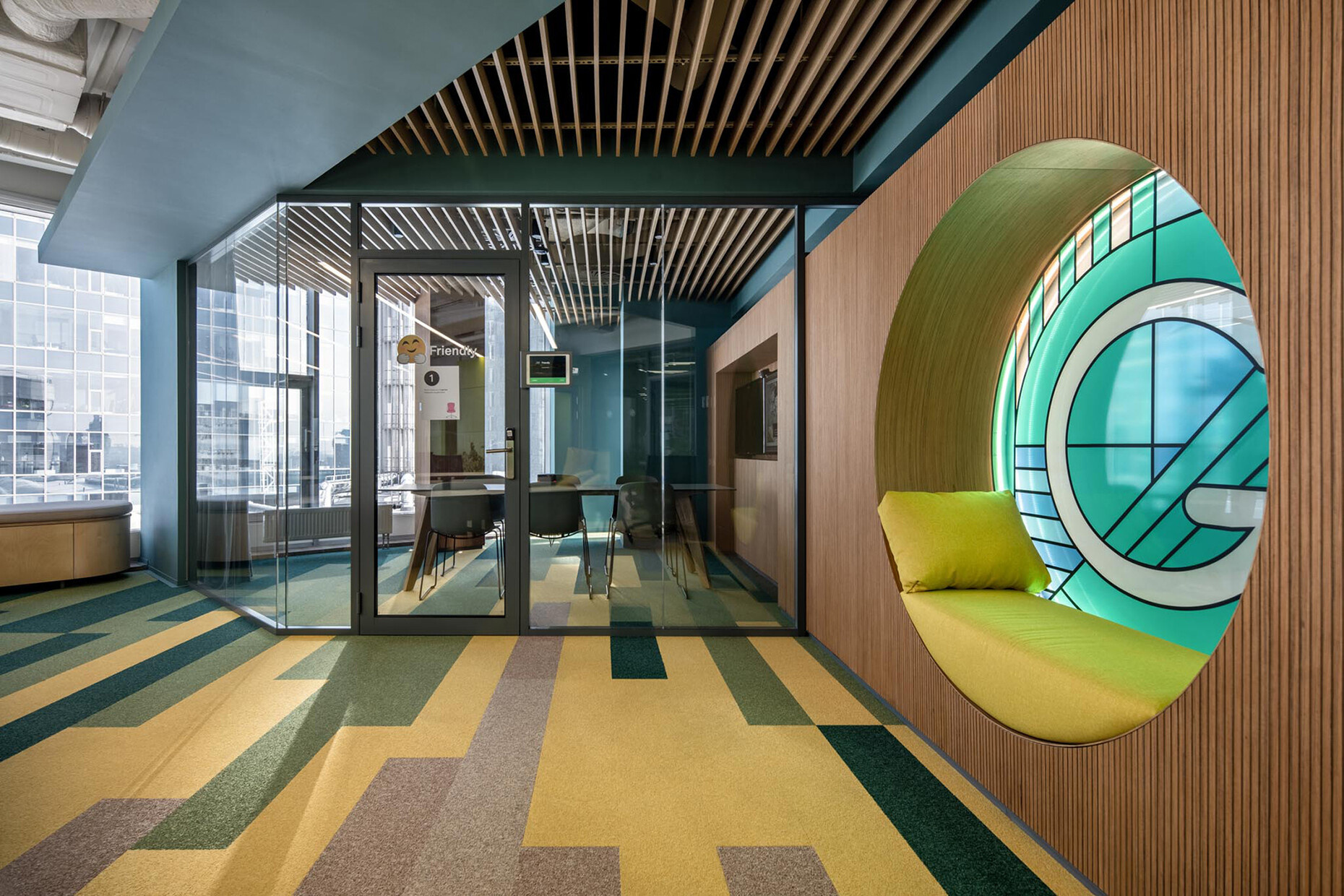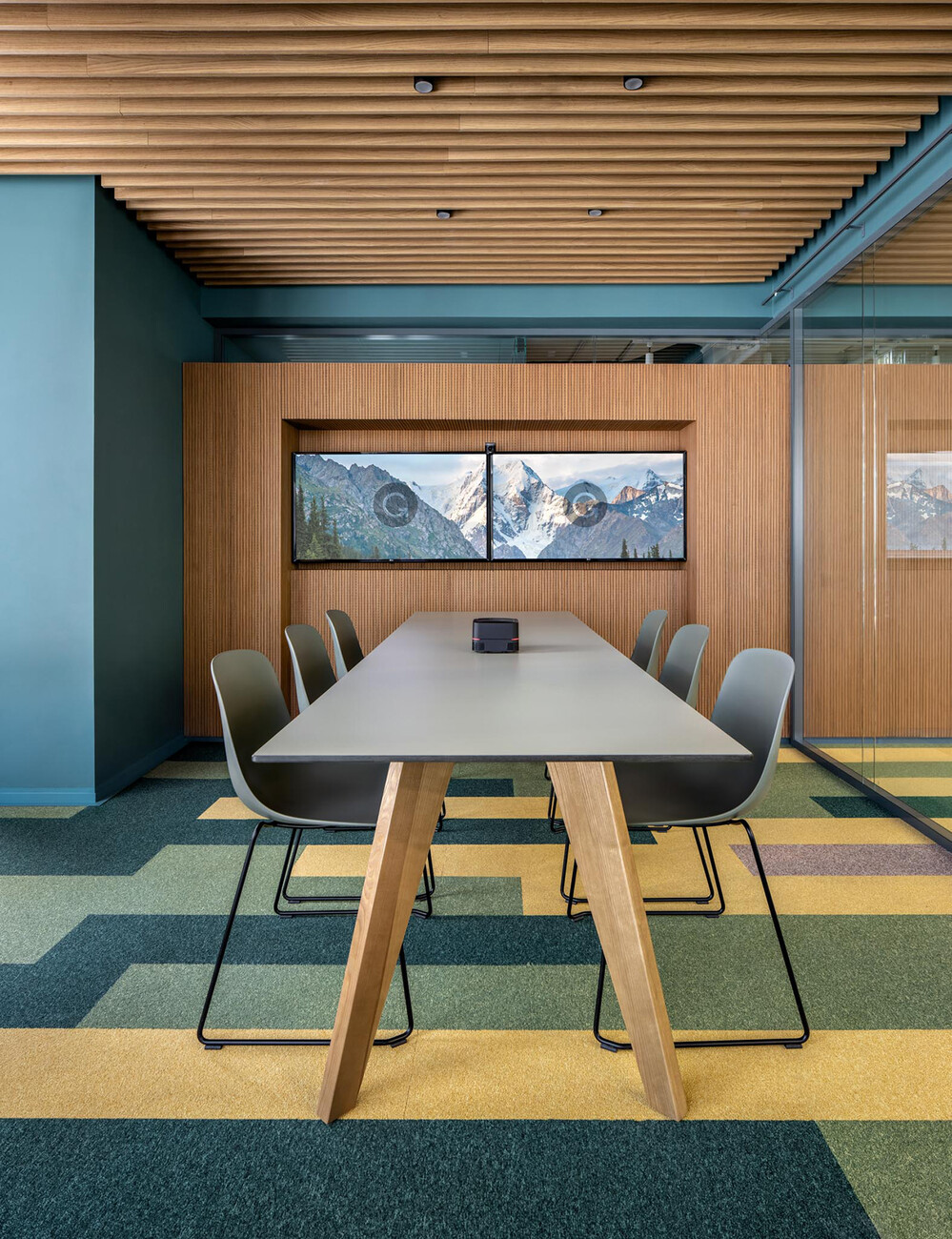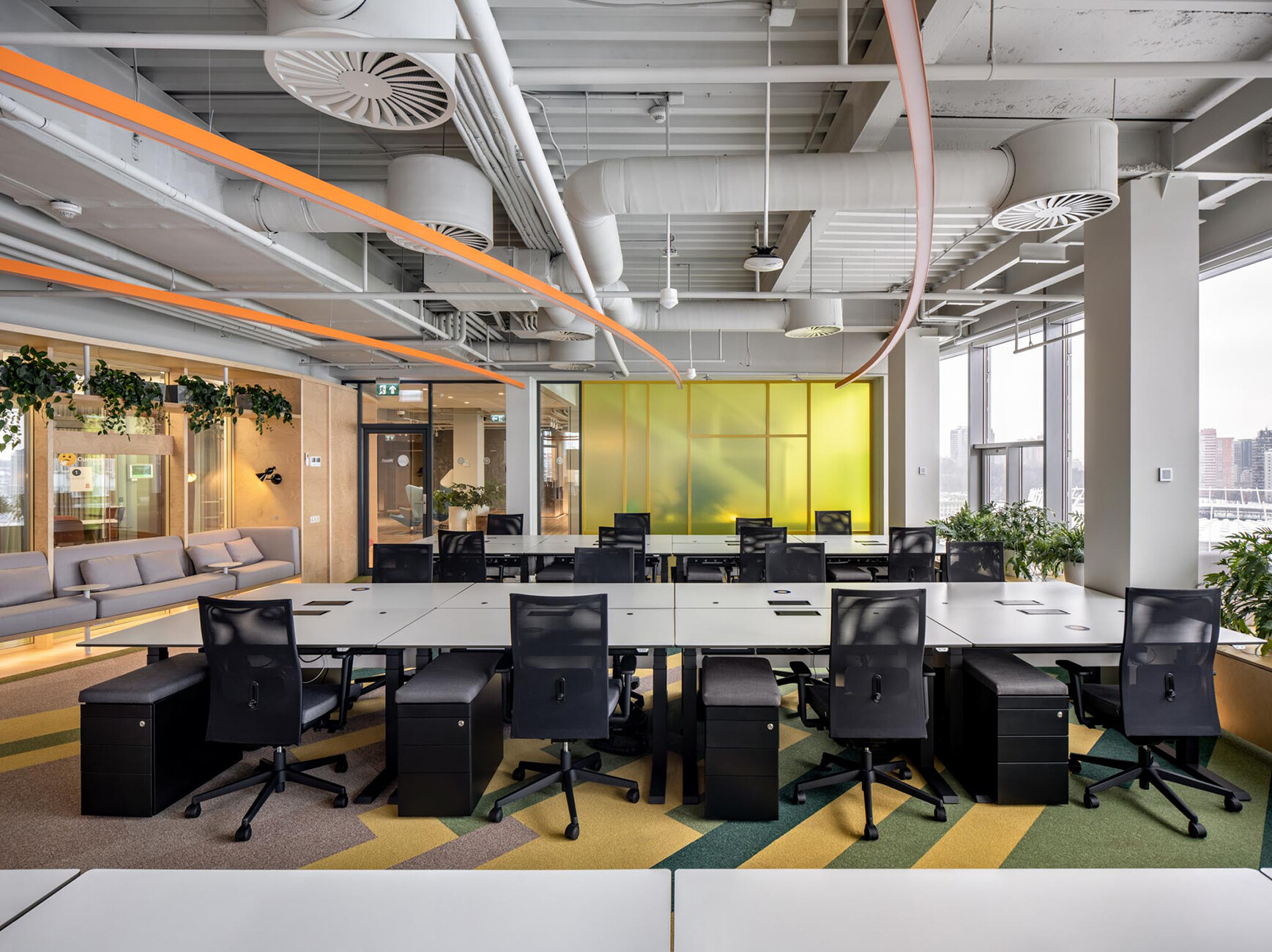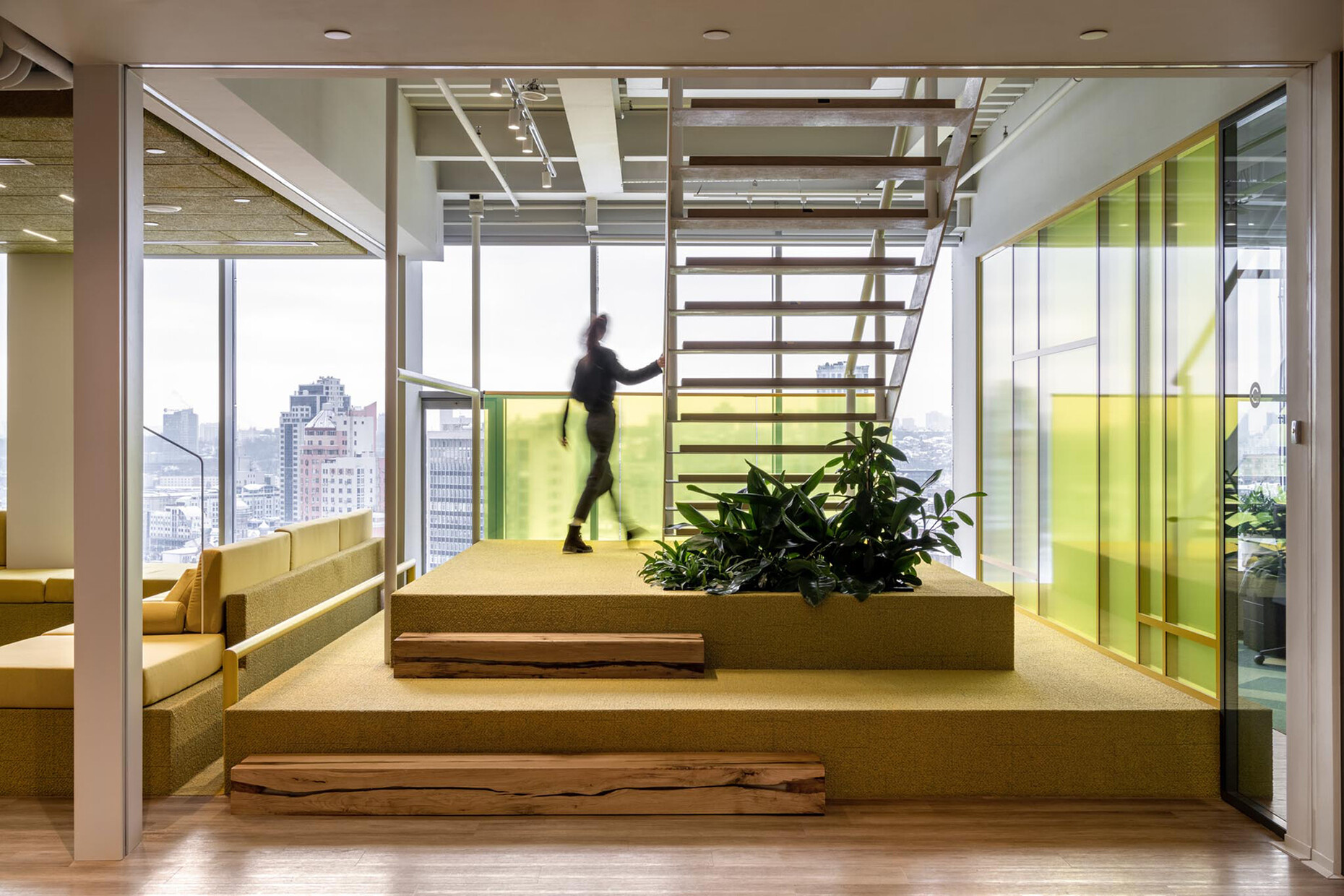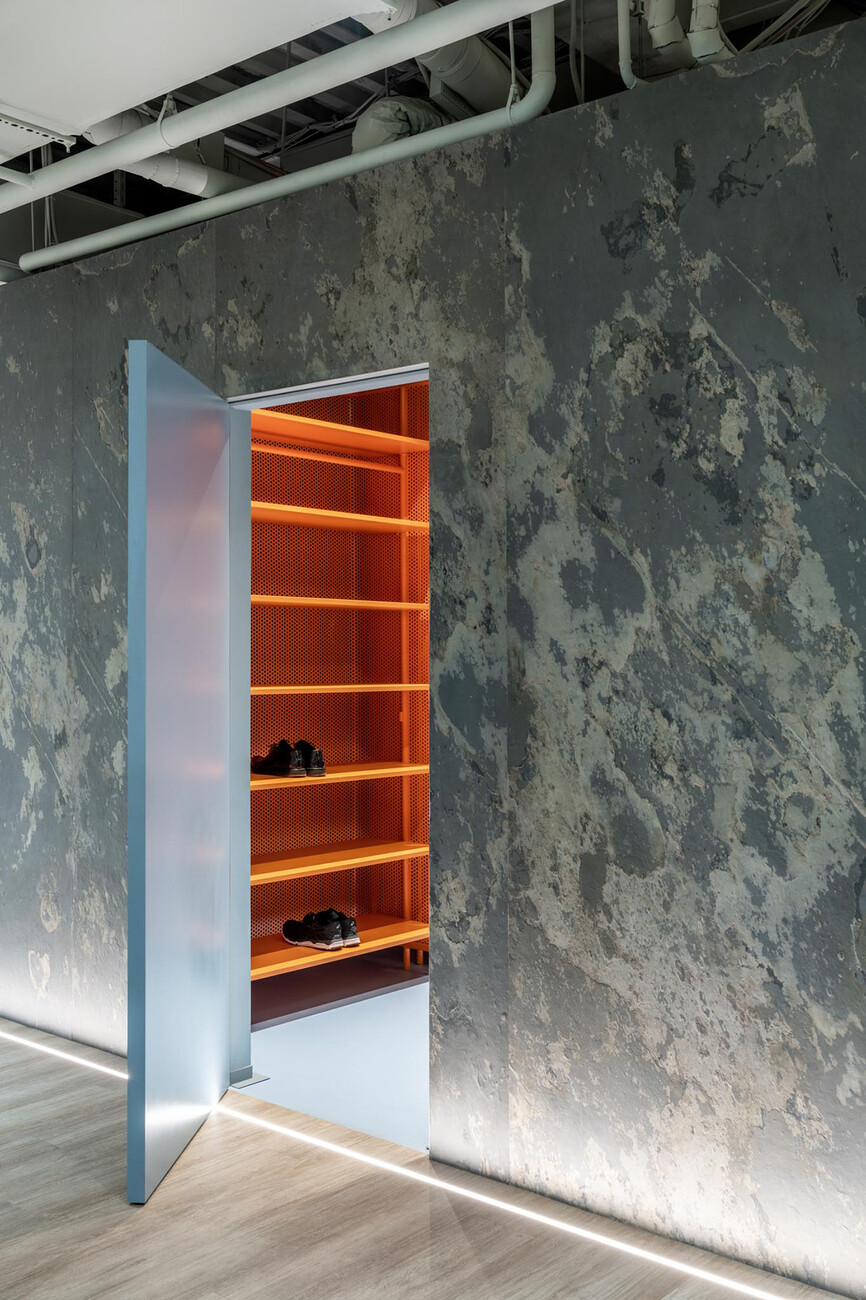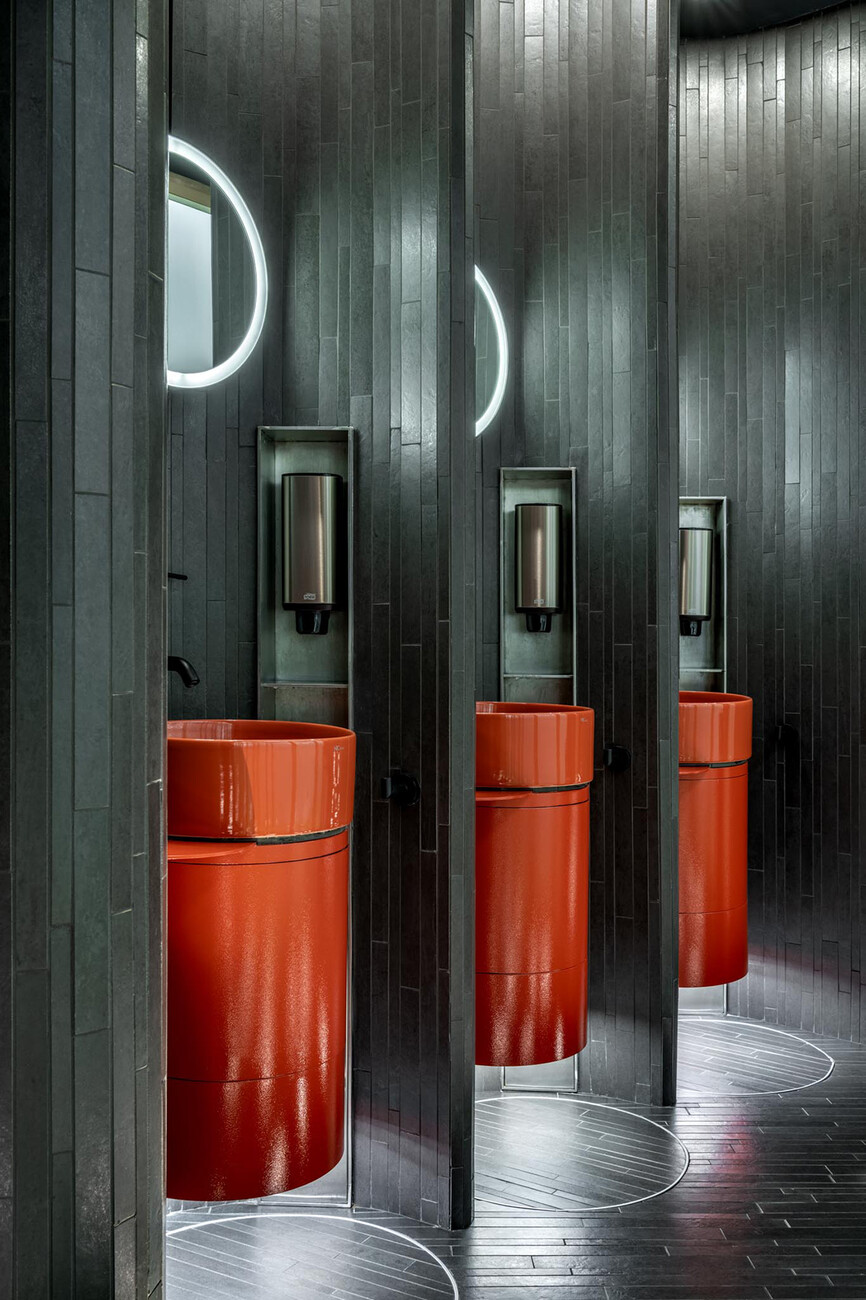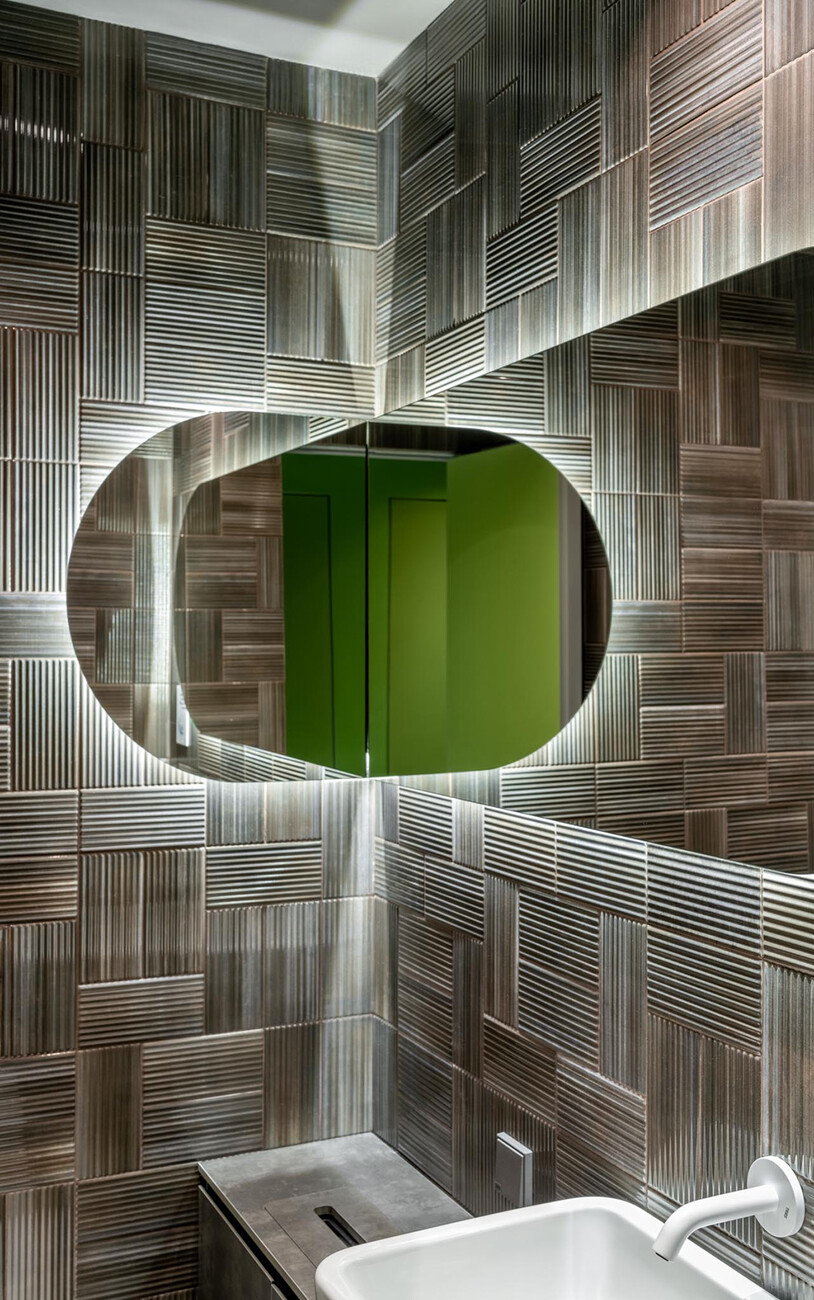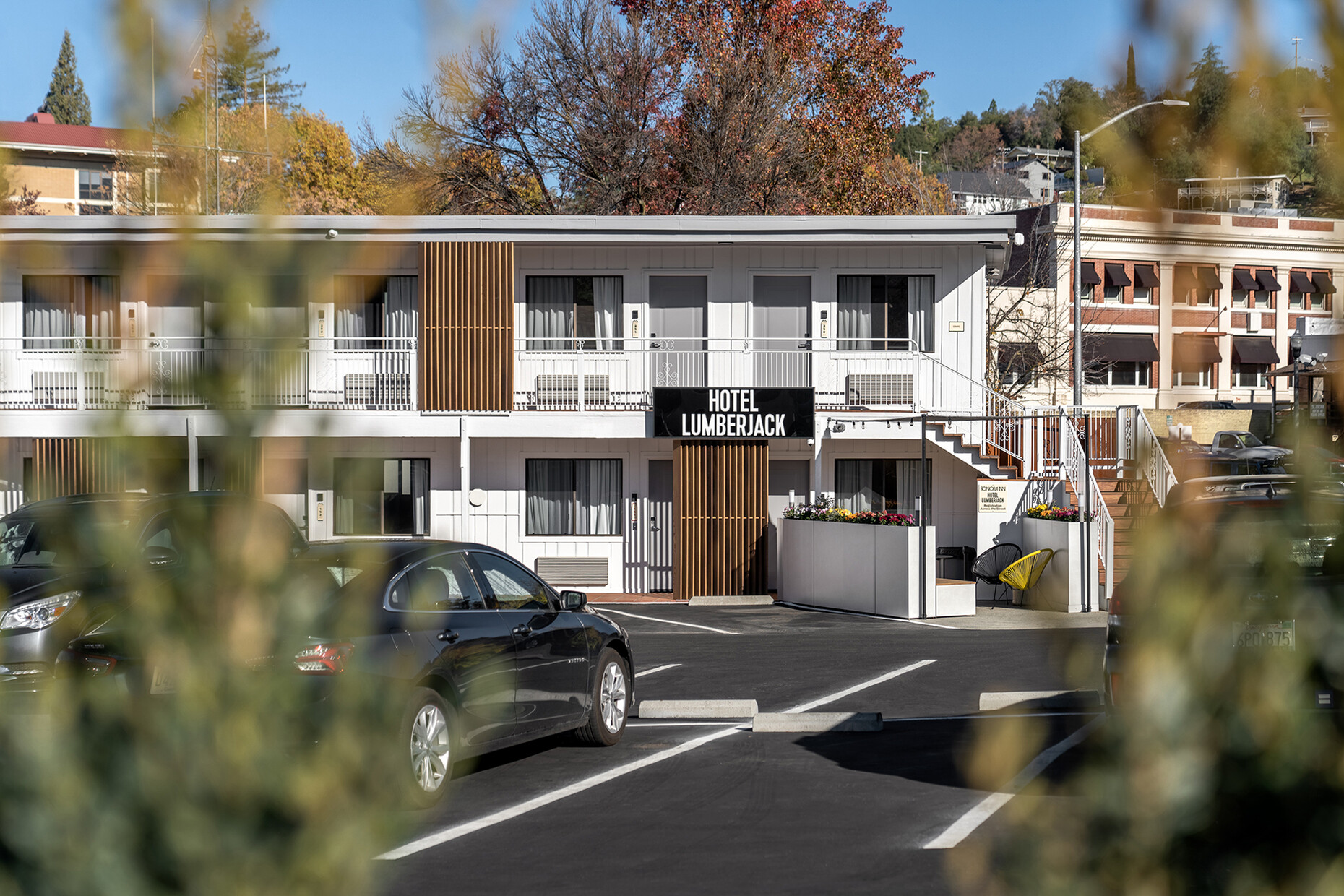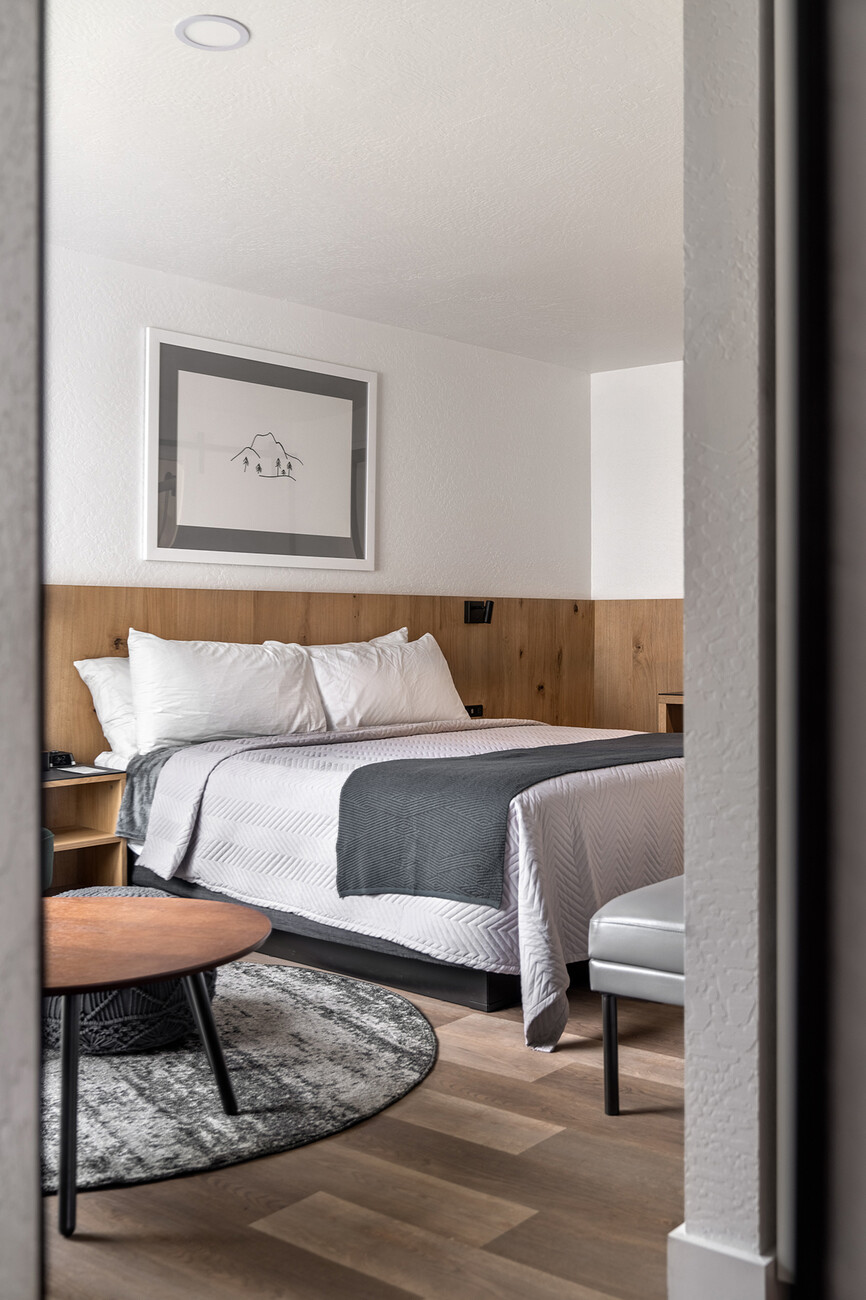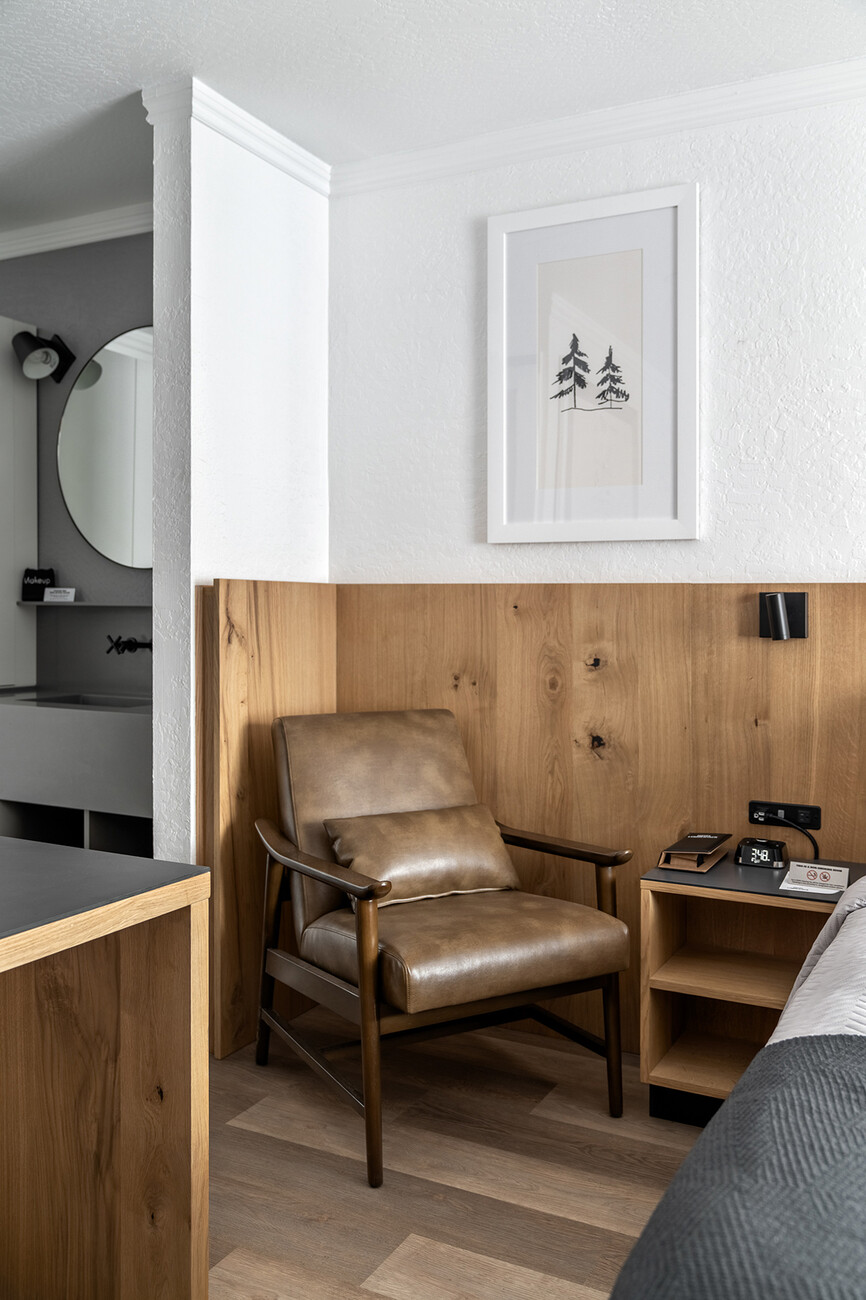In the balancing act
Simone Kraft: Borys, to get started, please give us a quick overview of balbek bureau. Who are you and what is your aim in architecture?
Borys Dogorov: My partner, Ukrainian architect Slava Balbek, and I co-founded balbek bureau in 2018, after the split-up of 2b.group studio established back in 2007. We are an architecture and interior design studio with a diverse portfolio of commercial, corporate, and residential spaces spanning Europe, China, and the US. Our projects have been recognized by the Hospitality Design Awards, the Interior Design’s Best of Year, and the Architecture MasterPrize. Our team currently consists of 55 members across 7 countries. As longtime fans of human-centered design and architecture, our core value is people. Whether it is an office for a global tech company or a temporary settlement for displaced individuals, we always keep those who will interact with the space in mind. So I would say, as architects, we aim to help people feel welcomed no matter where they go, and as a bureau of Ukrainian origin – to spread the word about Ukraine and scale our business globally. Before Russia's full-scale invasion of Ukraine, our studio primarily focused on hospitality and corporate design. Now, we juggle between commercial and social projects, trying to preserve the local architectural heritage and facilitate the rebuilding of Ukrainian cities. As for myself, I oversee daily operations as well as design and implement policies that shape the bureau’s structure and workflow. I have also been leading the studio’s most large-scale projects, such as a corporate hub for Grammarly in Kyiv, Ukraine, and Darron Incubation center in Qingdao, China. Since the beginning of the war, I am involved in supervising the balbek bureau’s social projects.
You have established several social projects under the title RE:Ukraine. What are they about?
Borys Dogorov: Since the beginning of Russia's full-scale war, our bureau has been crafting projects in response to war-inflicted challenges. Just three weeks into the invasion, we presented our RE:Ukraine housing initiative – a temporary housing system with a dignified approach to accommodating IDPs. Gaining public praise, the project was introduced to President Volodymyr Zelenskyy and presented at the Clinton Global Initiative. Over the year, our relief efforts have grown into a system of social initiatives united under RE:Ukraine umbrella title. Currently, there are five projects: RE:Ukraine Monuments, a solution for monument protection, RE:Ukraine Villages, an online constructor for the rural housing restoration, RE:Ukraine Memories, a commemoration design system, RE:Ukraine Vision, an AR-based application generating a virtual image of a restored house/street/district, and the aforementioned housing system for IPDs, RE:Ukraine Housing.
Let us know some more about these projects. Which difficulties do they address? What is most needed considering the current situation?
Borys Dogorov: Each project addresses a different challenge, be it preserving the cultural heritage or facilitating the rebuilding of Ukrainian cities. Since the war is still raging, the most pressing issue is accommodating people who had their homes destroyed or damaged by the occupants, which is what we intend to do with our RE:Ukraine Housing and RE:Ukraine Villages projects. To scale these projects, we need financing and tech support.
What is the current status of these projects?
Borys Dogorov: We just broke ground on the pilot project of RE:Ukraine Housing in the Bucha district of Kyiv region. The pilot will house 15 families and will help us gather feedback from people we initially designed RE:Ukraine Housing for. After that, we plan to make improvements and scale the project globally. The system can be replicated worldwide, helping to deal with global challenges: natural disasters (earthquakes, hurricanes), armed conflicts, etc. The first shelter under RE:Ukraine Monuments system was constructed in the spring of 2022 for the Mykhailo Hryshevsky monument in Kyiv. Later that year, in October, during a massive missile attack on Ukraine, the shelter was put to the test: an explosion nearby destroyed half of it, but it helped to save the monument itself. The shield has been restored since then, but we hope it won’t come to real-life tests again.
Could you tell us some more about the design of both projects?
Borys Dogorov: For RE:Ukraine Housing, we have analyzed more than 20 implemented projects in different countries regarding the use of the construction site, development of a master plan and layout of residential blocks. The main task we set for ourselves is to maintain a decent lifestyle for the residents. With RE:Ukraine Housing, displaced families can be accommodated in bright fully-furnished private rooms and apartments, with access to convenient kitchens, bathrooms, laundries, and baby care rooms. Each residential block can be adapted to different life scenarios & user profiles. With RE:Ukraine Monuments, we analyzed the global examples of protective structures: from WW2 sandbags to plywood and the netting used during mass protests and designed a standardized solution. The framework of the module is constructed using crossbar scaffolding. A crossbar frame is installed around the monument at a safe distance. The structure facade is covered with fire-retardant bakelite plywood, resistant to moisture and temperature changes. For largescale monuments, the inner facade is also fenced with netting, and the space between the plywood and the netting is filled with sandbags.
You are also exploring the possibilities of digital means. RE:Ukraine Villages is an online constructor for the rural housing restoration, RE:Ukraine Vision, an AR-based application. What are they, how do they work? (More on RE:Ukraine Vision?)
Borys Dogorov: RE:Ukraine Villages is an online constructor that simplifies the reconstruction of rural houses with respect for their surroundings. Using the RE:Ukraine Villages constructor, homeowners, volunteers helping with the reconstruction and local authorities will receive ready-made instructions for rebuilding their home: a pdf file with isometry, plans, drawings, facade scans and a technical description. The plan also contains recommendations for materials needed for the finish. The project is well underway and is at final stages of development: we are adding last-minute improvements and final tweaks before the launch in February.
While doing social projects, balbek bureau is working on commercial projects, too. Would you introduce us to your most recent projects?
Borys Dogorov: Since the beginning of Russia’s invasion, many of our commercial projects have been put on hold. Still, we are grateful to be doing what we love and complete constructions even during these trying times. Among those we recently released is Cheese Bakery, a pastry shop and cafe in Lviv, opened in the creative space KIVSH. It was created on the site of former artillery barracks during the Austro-Hungarian Empire's reign, at the end of the 19th century. Our task was to harmoniously fit the cafe into the old factory building's architecture and complement the interior with new design elements only where appropriate. Eventually, we settled on the concept of a minimalist interior, which would be cozy for customers. Earlier this month we also released Symbol, a digital showroom for the largest distributor of luxury segment brands in Eastern Europe. In 2021, Symbol approached us with a request for a boutique interior with a fresh new concept, but the full-scale invasion put the project's implementation on hold. Work resumed in May. Against all odds, the team implemented the project that offered a fresh vision for an experienced and demanding audience. Despite its compact area, the Symbol digital showroom has become a fantastic cluster of atypical and unique solutions: customers can navigate to select their outfits with the help of interactive fitting rooms and miniature stands with tablets instead of traditional showcases.
